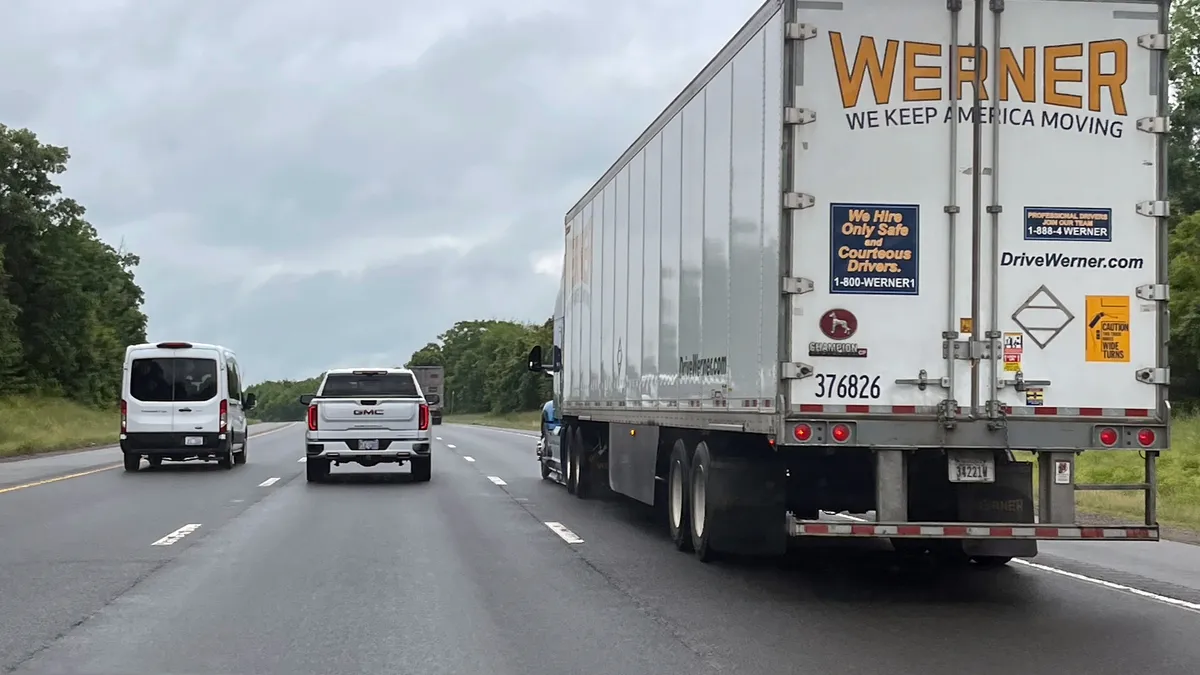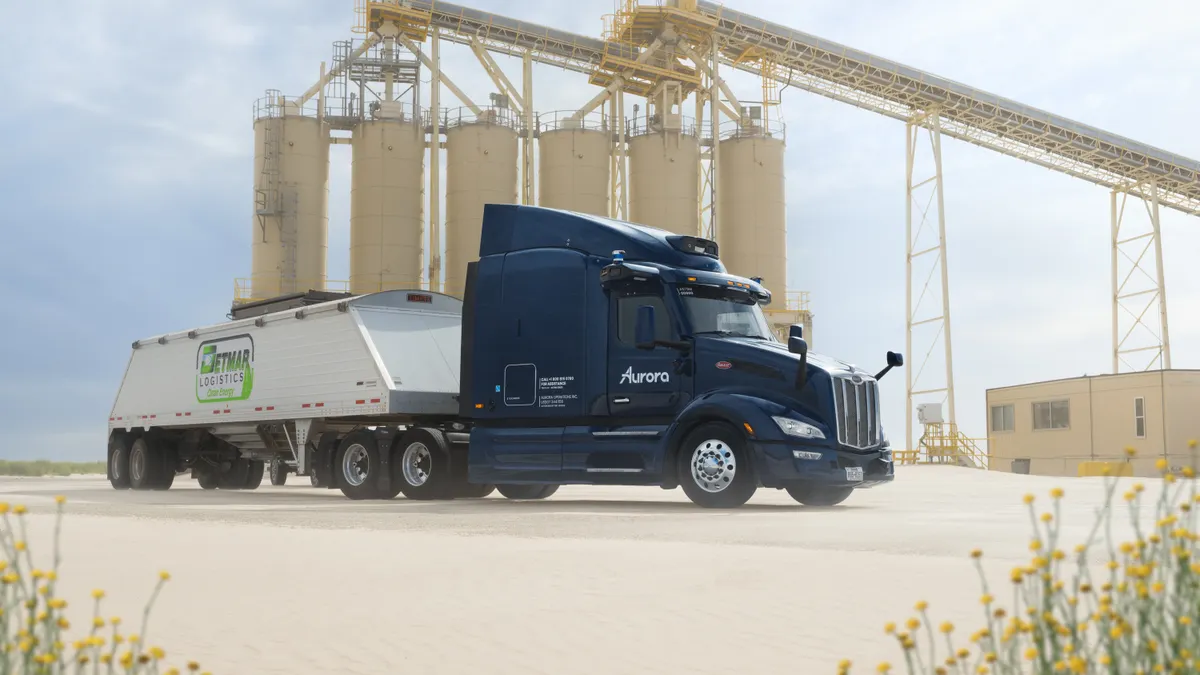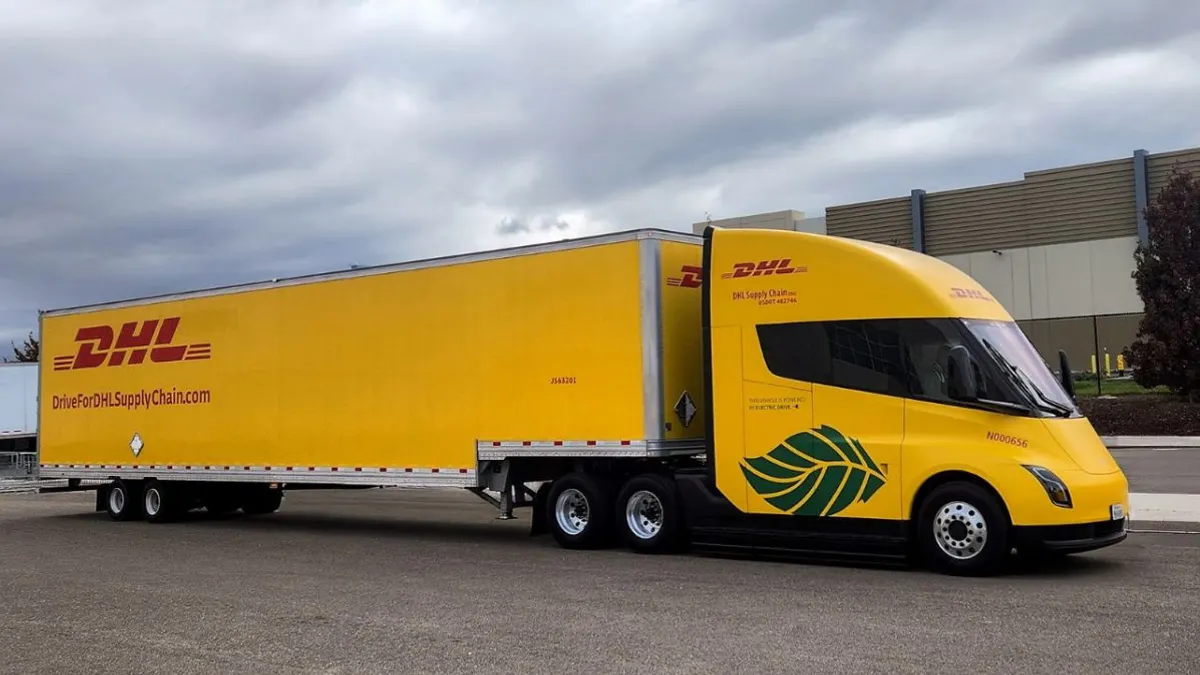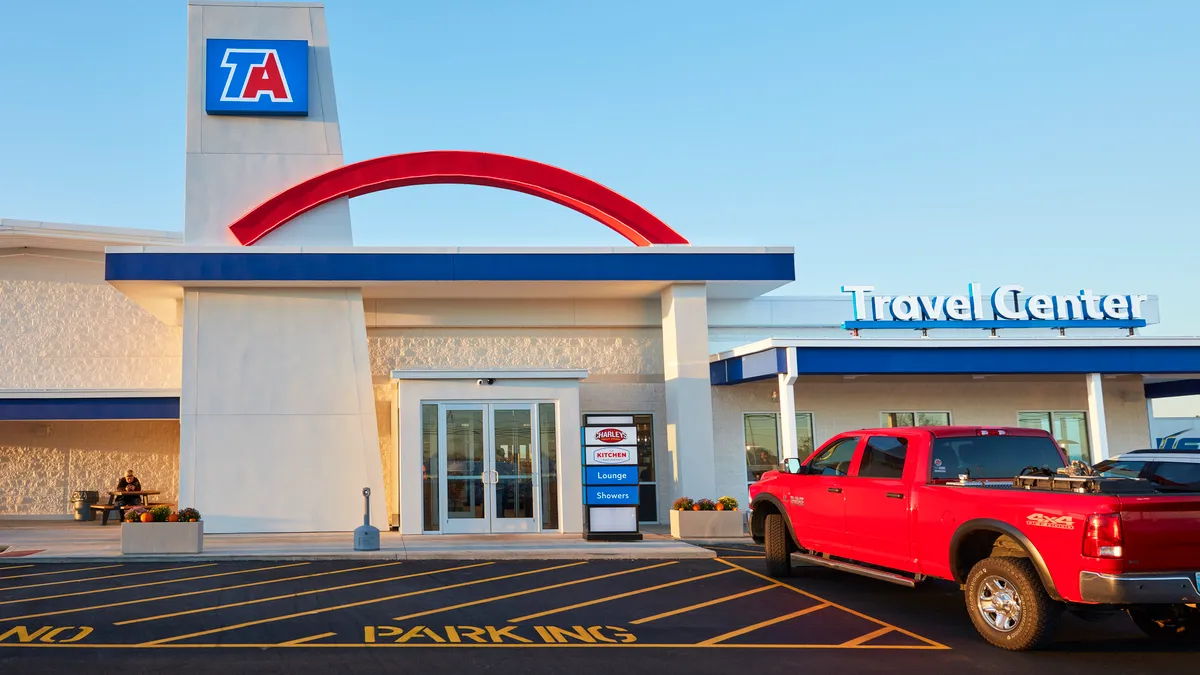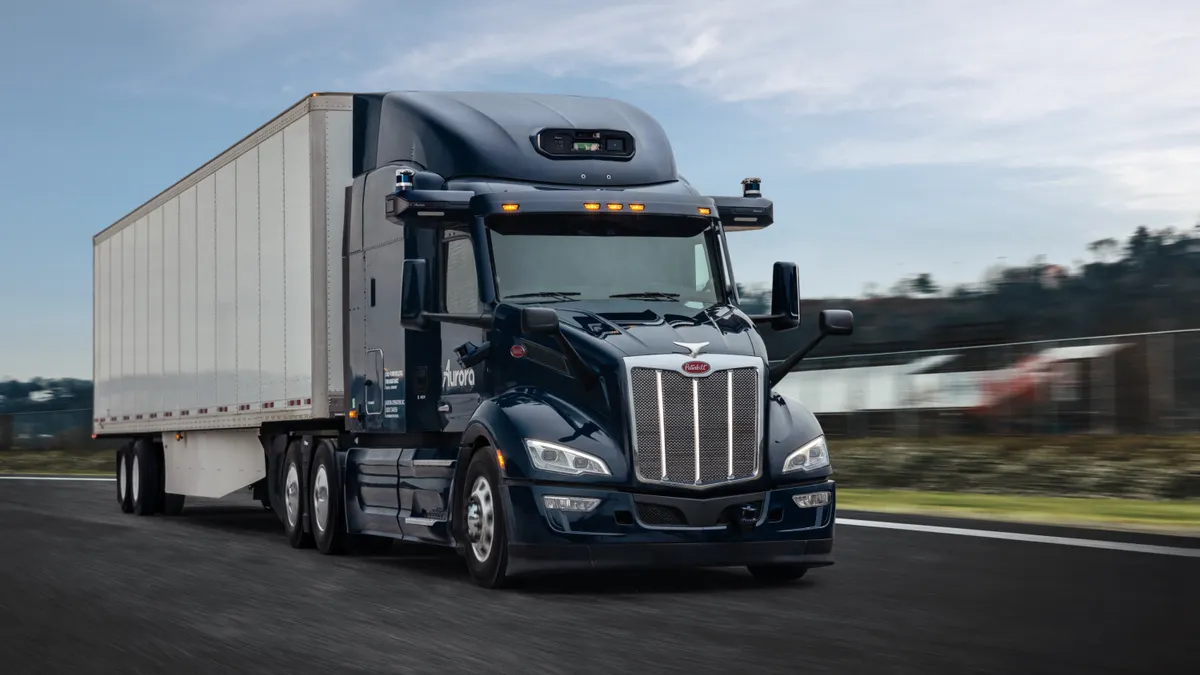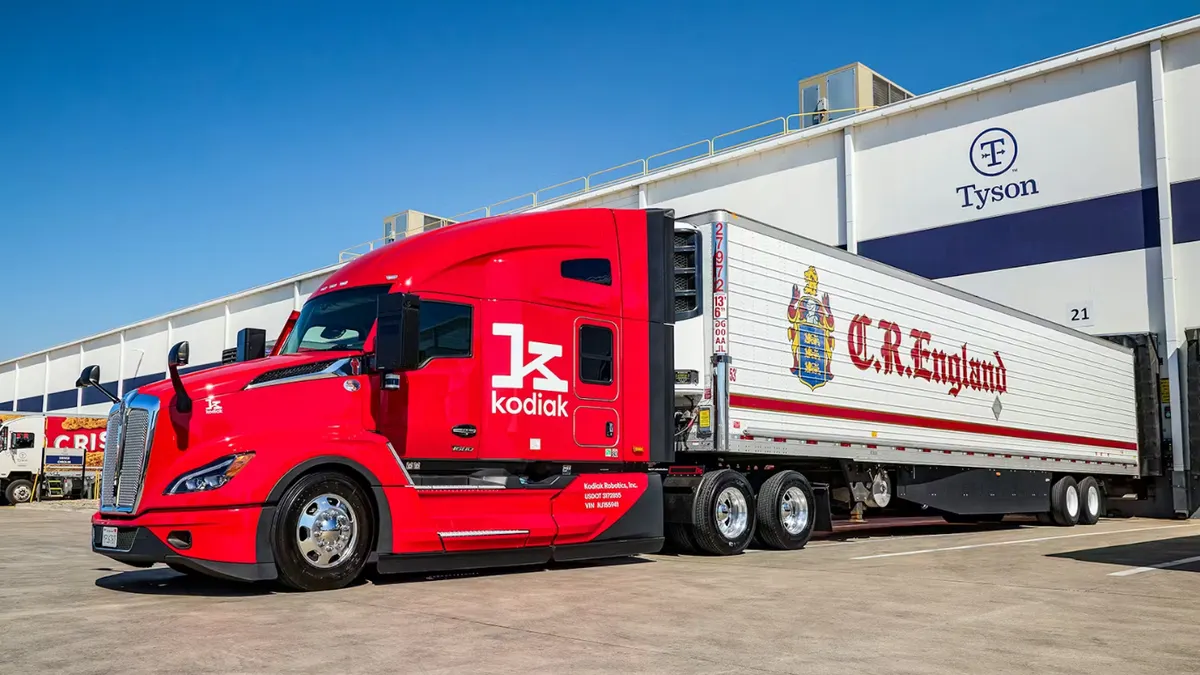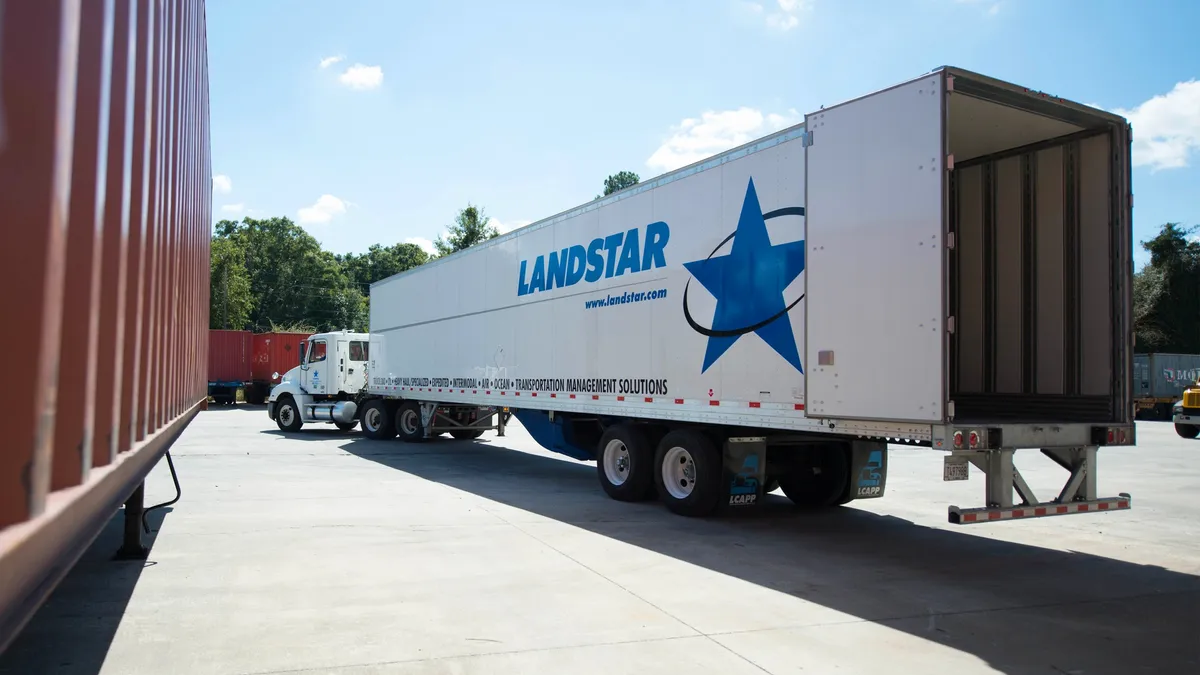With the rise of cargo theft incidents, carriers need a toolbox of varied solutions to both prevent incidents before they occur and to address problems afterward.
In 2024, incidents of cargo theft were up 27% year over year, reaching historic highs exceeding $1 billion, according to a July 16 testimony from David Glawe, president and CEO of the National Insurance Crime Bureau.
Glawe said that figure is set to rise another 22% in 2025 while “other estimates suggest that cargo losses may reach up to $35 billion annually.”
The rise of cargo theft has been a focus of the trucking sector, drawing attention through industry warnings and reports, congressional hearings and carrier interventions. One tool carriers are increasingly highlighting to combat cargo theft is artificial intelligence.
For example, Landstar System said in a May earnings call it was investing significantly in technology and AI and stressed how ongoing vigilance is needed.
“It’s playing a pretty hefty role,” said Werner Enterprises SVP of Logistics Jordan Strawn during an Aug. 28 webinar.
For Werner, technology and AI investment are nothing new. Besides using tech to combat cargo theft, Werner is also focusing on technological advances to fuel its logistics growth, including through its branded EDGE TMS.
The company is also scaling the use of conversational AI calling and notifications for reminders and communication with new hires, associates and brokerage carriers, CEO Derek Leathers said in a Q2 earnings call.
Leveraging AI before theft happens
Werner conducts a carrier vetting process that is extensive when deciding to do business and “we're leveraging AI to understand who it is we're working with,” Strawn said.
Being able to know who you’re working with before accepting business can help lower the risk of cargo theft. Data is consumed during the vetting process, after which AI is leveraged to understand what the information means and if it makes sense for Werner to move a load.
One strategy the company employs is to analyze what a carrier does within Werner’s network.
“If they're moving a load from Dallas, I think we typically see them in the Southeast, and the furthest they stretch out is maybe out of the Southwest,” Strawn said. Then, if that same customer wants a load that's coming from the Northeast going to the West Coast, Werner leverages AI to consume and aggregate the information so it can make an informed decision about whether to take on the load
Leveraging tech after theft happens
“There's a really cool tech out there right now that helps us on the backside if equipment gets stolen, or if a load gets stolen, that's on our third-party carrier,” Strawn said.
The tech Strawn is referring to leverages computer imagery. The third-party carrier has placed cameras all over major corridors throughout the United States, specifically focusing on areas where it expects to take in the most useful information.
Through those cameras, Werner can see snapshots of commercial vehicles to identify information such as MC, DOT, truck, trailer and tag numbers. When a load comes up missing, Werner can go to the database created by the system and enter details obtained from a shipper or surveillance.
“It’s been extremely successful. We've actually been able to locate and send authorities to go and stop these trucks while they're in motion, because we followed them where they're going,” Strawn said.
Other carriers Werner works with are becoming more open to technology, such as electronic logging device integrations.
In the past, Werner found carriers frequently unwilling to share information, but the Omaha, Nebraska-based business is leveraging ELD integrations in its TMS platform to identify where a truck is and when it arrives to its destination. This provides Werner access to data confirming a trucking is moving along a route appropriately while allowing it to safeguard against sharing information that should remain in-house, Strawn said.
If a truck is tracking on time and in the right location with the correct load, Werner will share pickup information with carriers and safeguard that process through multifactor authentication, he added.


